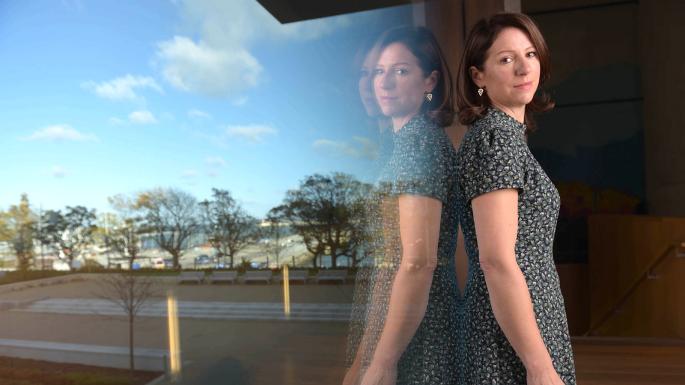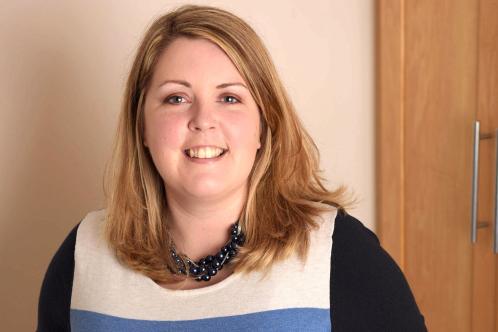Eithne Shortall learns how self-publishing helped four Irish writers plot success
 When Hazel Gaynor was made redundant from her Dublin finance job in 2009, she started to write. First came articles and a blog about transitioning from corporate career to stay-at-home parenting; the impulse to write a novel soon followed.
When Hazel Gaynor was made redundant from her Dublin finance job in 2009, she started to write. First came articles and a blog about transitioning from corporate career to stay-at-home parenting; the impulse to write a novel soon followed.
Her first book was sent to several Irish publishers without success; her second, a historical story set on the Titanic, got more positive feedback but was still declined. The Titanic centenary was in April 2012 and most publishers had tie-in books confirmed two years in advance. Rather than let it gather dust in a drawer, Gaynor decided to publish The Girl Who Came Home herself.
“I just felt, if I don’t do it now, I never will,” says the Yorkshire author who has lived in Ireland for 15 years. “For me it was about believing in this book, wanting to tell the story, and having an anniversary to spur me on. If that hadn’t been happening, I possibly wouldn’t have done it. I remember saying to my husband, ‘If 100 people read it, that’s better than it just sitting on my laptop.’ Also, I felt I was spending so much time and energy being frustrated, being disappointed by this book, that I almost needed to let it go to focus on writing my next book, which I hoped would earn me the traditional publishing deal. I was still focused on that.”
Gaynor paid for a professional edit and cover design, and uploaded her novel to Kindle. She was able to target readers interested in historical fiction, Titanic tales, and stories based in Ireland. The online reader reviews were positive and the digital book sold well. Within a year, it had been downloaded by almost 100,000 readers.
Self-publishing was once derided as a vanity pursuit, the assumption being that if a publishing house didn’t want a book, it must be bad. Some people still pay to have books physically produced, but nowadays self-publishing generally refers to digital books. Readers are often unable to tell what has come from a publishing house and what hasn’t, and there are increasing numbers of success stories. Even physically produced self-published books are often of excellent quality and finish, not to mention precisely printed with minimal errors. To know how this is accomplished, discover here the magic weaved by printing companies to help authors get their book out in the market. The Martian, which was recently adapted as a film with Matt Damon, and Still Alice, turned into a movie with Julianne Moore, started as self-published titles. Fifty Shades of Grey is another self-publishing success.
The strong performance of The Girl Who Came Home brought Gaynor to the attention of a literary agent and ultimately HarperCollins, which rereleased it as a traditional book. The publisher also took Gaynor’s next two titles. Her latest, The Girl from the Savoy, is nominated at next week’s Irish Book Awards.
“Writing’s a solitary profession at the best of times and to be doing it all on your own is really difficult,” she says of her preference for the traditional route over self-publishing. “You have nobody reinforcing you or sharing the decisions or the excitement. Kudos to anyone who self-publishes and does well, particularly anyone who has self-published a book that was rejected as not good enough when you’re saying, ‘Well actually, I think it might be.'”
However, some authors prefer to take on the workload – being author, editor, marketer and publisher – in exchange for artistic freedom. Orna Ross, who recently won the inaugural Carousel Aware prize for Irish self-published authors, landed a two-book deal with Penguin Ireland in 2003. The difficult compromises came quickly. Ross saw her first novel as a multi-layered murder mystery that explores the Irish Civil War, but claims Penguin saw it as chick lit. The publisher changed the title and gave the book a pink cover; Ross is anti-pink.
Years later, she self-published the same story under its original name and with a cover she liked. Now, she says she wouldn’t go back to traditional publishing.
“It’s not right for me,” she says. “For a particular title, if it made sense, I would work with an indie publisher. I’d certainly like to work with overseas publishers for translations and stuff like that. I’ve got much more creative freedom [as a self-published author], I’ve got better income. It’s just a much better route for me.”
Ross says financial success depends on how good a publisher you are. As well as professional editing and design, a good social media campaign is essential. Online reader reviews and pricing – generally between free and €3.50, but you can alter it regularly – also matter. “The reason you can make a better living is because, as an independent publisher, you can build a business; you can track where your sales have gone,” says Ross. “With digital sales you’re global; you’re not confined to your market. For Irish writers that’s particularly good, because Ireland is hard to make a living from.”
Laurence O’Bryan’s first three books were published by HarperCollins between 2012 and 2013, but when the publisher rejected his fourth instalment in the Istanbul Puzzle mystery series he was faced with either giving up or publishing it himself. So the Dubliner uploaded The Nuremberg Puzzle to Kindle last April. Now Amazon is making monthly payments to him, usually of about €400.
“It’s actually inspired me to write the next one,” he says. “I won’t be buying a house in Barbados, but I expect to make about €5,000 a year because the sales are continuing at a reasonable level. Publishers usually only give small advances these days: €2,000-€5,000 is what you’d expect, unless you’re lucky. Probably that was in the region of what I’d have been paid.”
If O’Bryan writes something outside the series, he’d consider sending it to a publishing house, but he likes having options. Publishers regularly drop writers, and self-publishing meant O’Bryan didn’t have to retire. “I’d rather be writing and getting them out there presented nicely with a nice cover, and see what happens,” he says.

Catherine Ryan Howard calls it a great plan
Catherine Ryan Howard started her writing career in 2010 with a self-published memoir about working at Walt Disney World, but her dream was always a traditional publishing deal. “I was really just doing it to keep myself in coffee and ink cartridges while I wrote the novel I was hoping would get published,” she says. That happened this year when Corvus, an imprint of Atlantic Books, released Distress Signals.
“I think self-publishing is great and it’s a fabulous plan B,” says Howard. “Self-publishing is not the same as getting published, and I didn’t even realise how true that statement was until this past year when I was published. There’s a million [differences], but one thing that really hit home was when you self-publish and somebody finds your book, it’s usually because you did it, somehow. They read your blog or saw an advertisement you put up, or they met you. Whereas when you’re traditionally published, your book is put out there in the world by other people. People are sending me pictures of my book in book shops in Australia. There’s a magic about it that self-publishing doesn’t have.”
Ross, who is also founder of the Alliance of Independent Authors, says that if reviewers spend two minutes reading a self-published title, they can tell whether it’s worth continuing.
“Publishing has curated the output from authors for the past 50 years or so; before that, self-publishing was very common,” she says. “A lot of the great names, like Joyce and Woolf, [were self-published]. Yeats used his sisters’ press to self-publish.”
Howard understands why self-published books aren’t covered by newspapers – readers expect reviewed titles to be in book shops. But she thinks the Irish Book Awards could one day establish a self-publishing category. As it is, three nominees at the 2016 awards are former self-published authors: Gaynor, Howard and Carmel Harrington.
“I’ve wanted to be a published novelist since I was eight years old,” says Howard.
“I wasn’t imagining the feeling of seeing my book on a Kindle after I put it there. Maybe future generations will dream about self-publishing success, but for me it was always about someone else saying, ‘I want to publish your book.'”
